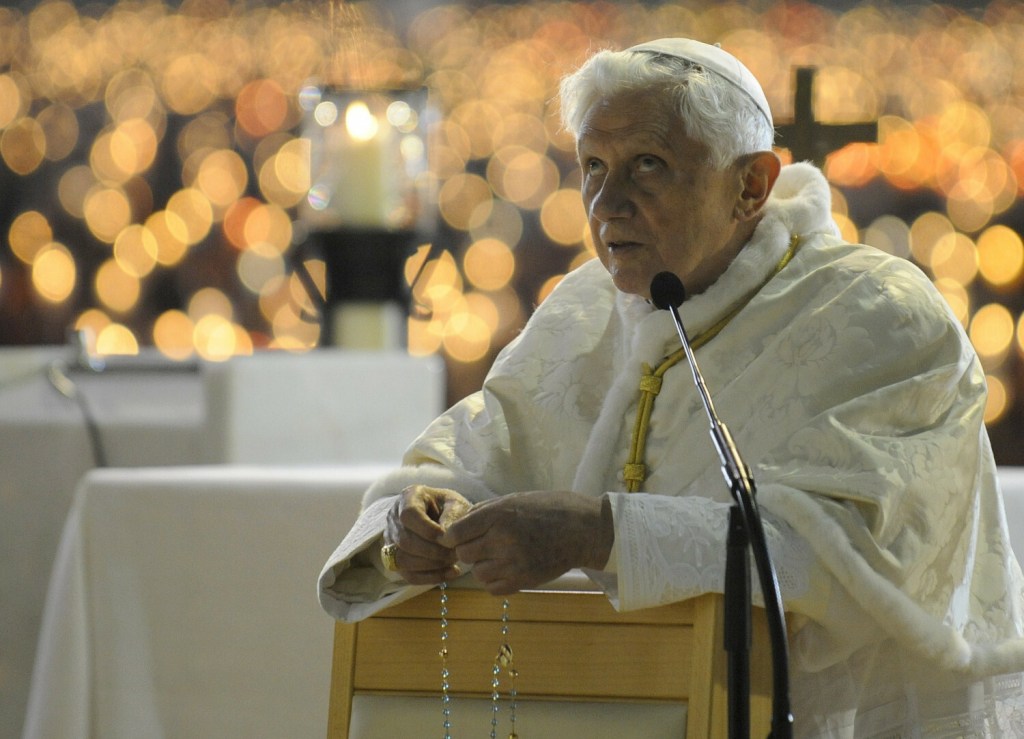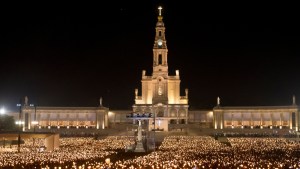The WYD in Lisbon will give Pope Francis the opportunity to return to Portugal, from August 2 to 6, 2023. He already visited the country in May 2017 for a short visit focused on the Fatima shrine on the occasion of the centenary of the Marian apparitions and the canonization of the two young visionaries, Francisco and Jacinta.
Paul VI, John Paul II, and Benedict XVI have also visited this country deeply marked by Catholicism. Here, we look back at the various pontifical journeys to Portugal starting when Paul VI visited until the present day.
Paul VI’s 1967 pilgrimage: A plunge into popular piety
Pope Paul VI, the initiator of apostolic air travel, dedicated his 4th international journey to Portugal and the shrine of Fatima. He went on May 13, 1967, to mark the 50th anniversary of the apparitions of Mary to the three little shepherds. One of them, Lucia Dos Santos, then a nun, was granted the exceptional permission to leave her Carmelite convent to receive communion from the Pope.
The visit was short and condensed, lasting just 17 hours. The Pope wanted to avoid any political manipulation of his visit by the regime of the aging dictator Salazar, with whom he only had a brief meeting lasting a few minutes.

This paradoxical trip to a place sometimes presented as a “fortress of the anti-Council” — with some opponents of Paul VI speculating about a third secret involving the self-destruction of the Church — was a great popular success. Almost one and a half million people gathered around Peter’s Successor, i.e., over 15% of the country’s population. The Pope, although cautious in his public statements on the subject of Marian apparitions, was touched by the traditional piety of the Portuguese. Indeed, many pilgrims made long journeys on foot to reach the Marian shrine.
“The astounding and magnificent vision of the Fatima crowd assures us that the paths to peace are indeed prayer, faith, and concord,” declared the Italian Pontiff at the end of his trip. On one hand, it had been a journey focused on the search for internal peace within the Church in the context of the upheavals of the post-Council era. On the other hand, he also used it to call for intercession for world peace: The war in Vietnam was making the headlines in the international press at the time.
John Paul II’s three trips to Fatima as a Marian pope
John Paul II’s first visit, from May 12 to 15, 1982, came a year after the assassination attempt in St. Peter’s Square on May 13, 1981, which had left him hospitalized twice and suspended from international travel for a year.

In addition to stops in Lisbon, Braga, and Porto, the Shrine of Fatima was the focal point of his visit on May 13 1982. He said he wanted to “thank Divine Providence in this place which the Mother of God seems to have so particularly chosen.”
John Paul II was convinced that Mary had deflected the bullet that would have taken his life. He had the 9 mm projectile embedded in the crown of the statue of Our Lady of Fatima.
A serious incident, relatively forgotten since, nevertheless marked his visit. During a visit to this Marian shrine, John Paul II was stabbed by a former priest of the Society of St. Pius X.
The cassock-wearing Spaniard, Juan Fernandez Krohn, had been ordained by Archbishop Lefebvre in 1978, but was expelled from the fundamentalist community a year later due to mental imbalance. Archbishop Marcel Lefebvre strongly condemned the attack, insisting that his community had no further connection with the man, who had served in two places of worship of the Society of St. Pius X in Paris and Rouen.
It wasn’t until 2008 that the Polish Pontiff’s former secretary, Cardinal Stanislaw Dziwisz, revealed that the pope had been injured during this attack, which received little media coverage at the time.
“Now I can say it: The Holy Father was wounded. I remember the blood on his white robe as he entered his room,” explained the cardinal, now Archbishop of Krakow, in a documentary broadcast to mark the 30th anniversary of John Paul II’s election. For his part, after several years in prison in Portugal, John Paul II’s assailant — excommunicated and now aged 75 — rebuilt his life in Belgium, becoming a lawyer and blogger.
The Polish Pontiff would return to Portugal on two occasions. From May 10 to 13, 1991, he toured the country’s island territories from Lisbon to Madeira and the Azores. He then stopped off at Fatima to send a Letter to the Bishops of Europe, with a view to the Synod on Europe to be held in the Vatican at the end of 1991, a year marked by the break-up of the USSR.
Finally, from May 12 to 13, 2000, John Paul II paid a final visit to Fatima. During the trip he beatified Francisco and Jacinta Marto, the two little shepherds who had died of Spanish flu shortly after the apparitions. The third visionary, Sister Lucia, was still alive and so attended the beatification of her two cousins, 83 years after the events. She died in February 2005, less than two months before John Paul II.
2010: Benedict XVI confronts a secularized Portugal
From May 11 to 14, 2010, Benedict XVI visited a country in the throes of transformation. The German Pope visited three cities — Lisbon, Fatima and Porto — 10 years after his predecessor John Paul II beatified the little shepherds of Fatima.
The socialist government of José Socrates promulgated four public holidays and welcomed him with honors, but the promulgation of same-sex marriage three days after the Pope’s departure showed the rapid evolution of Portuguese society, to the great dismay of the local episcopate and the Holy See.

One of the highlights of the visit was the German Pontiff’s address to the world of culture gathered at the Belém cultural center. There, he was greeted by a warm speech from film director Manoel de Oliveira, who was 101 years old at the time, but who impressed Benedict XVI with his dynamism and the fluidity of his speech. “I send him my greetings, full of admiration and affection, as well as deep gratitude for the words he has addressed to me, in which he reveals the concerns and expectations of the Portuguese soul in the midst of the turbulence of today’s society,” declared the German Pontiff.
In 2010, the growing number of scandals involving the abuse of minors by members of the clergy attracted a great deal of media attention, particularly following the Pope’s statement on the plane from Rome to Lisbon that the Church’s greatest suffering stems from its own “sin.” This statement gave rise to a controversy of interpretation between the notion of “sin of the Church” and that of “sin in the Church.” But beyond these controversies, here again, the popular fervor expressed by the crowds at Fatima, with the presence of many international pilgrims, was a powerful image of this trip.
Pope Francis’ prayer at Fatima in 2017
The first Latin American pope in history traveled to Fatima (without making a stopover in Lisbon) on May 12 and 13, 2017. On this trip dedicated to the centenary of the apparitions, the deeply Marian Argentine Pontiff canonized Francisco and Jacinta Marto.

The highlight of this short stay was Pope Francis’ prayer for peace in the Chapel of the Apparitions.
“As a pilgrim of the Peace which you proclaim in this place, I give praise to Christ, our peace, and for the world, I ask for concord among all peoples,” declared the Argentine Pontiff, visibly moved. “United with my brothers, in Faith, in Hope, and in Love, I entrust myself to You. United with my brothers, through You, I consecrate myself to God, O Virgin of the Rosary of Fatima,” he said as he concluded the prayer, which had a very personal tone.
It was also at this shrine that Cardinal José Policarpo, then Patriarch of Lisbon, consecrated the Argentine Pope’s pontificate to the Virgin Mary on May 13, 2013, two months after his election to the Petrine See. The Pope’s scheduled return to Fatima on Saturday, August 5, 2023, as part of his second visit to Portugal, was therefore a natural choice.





